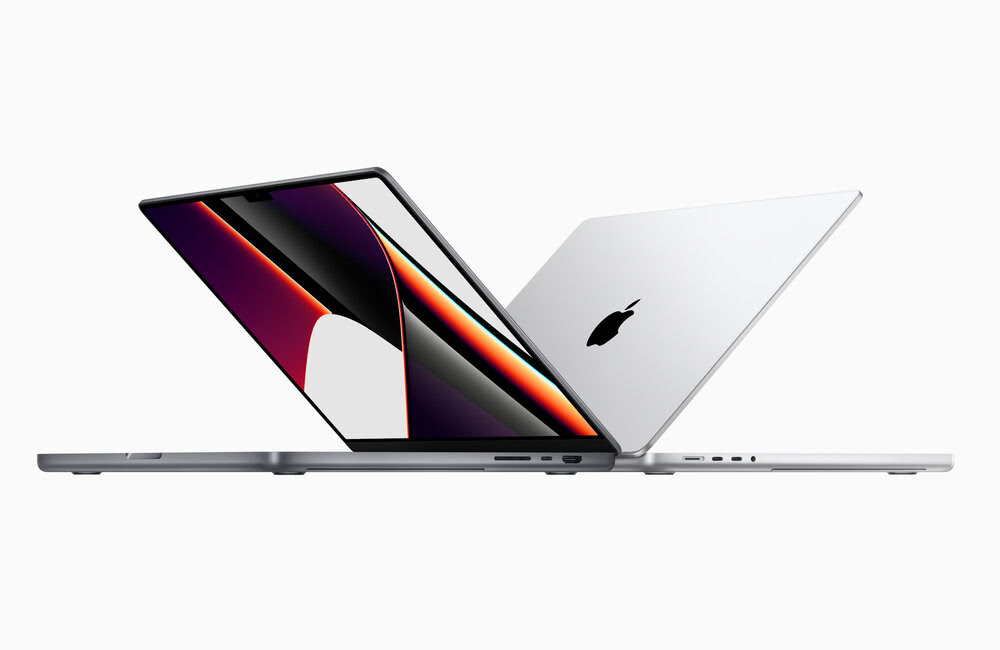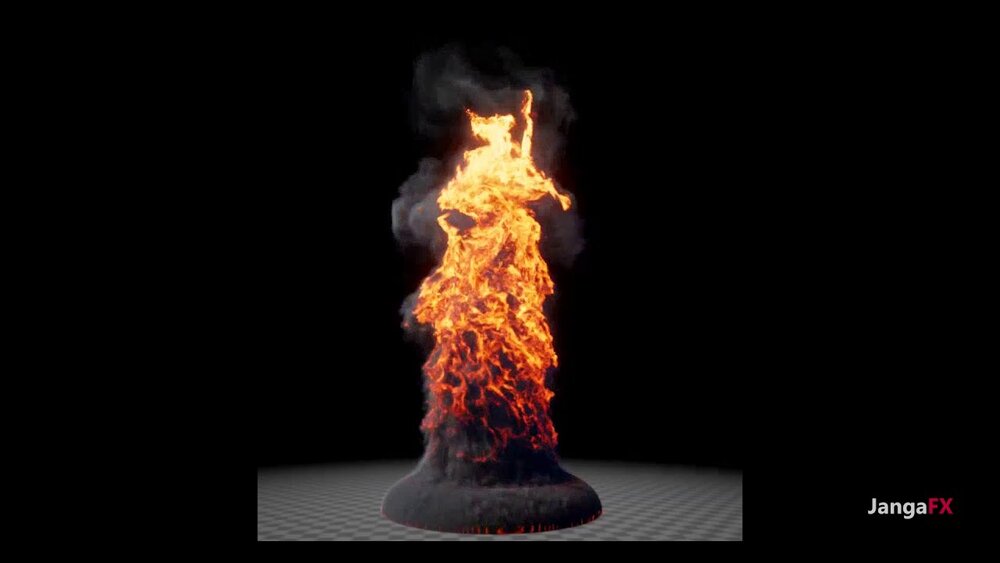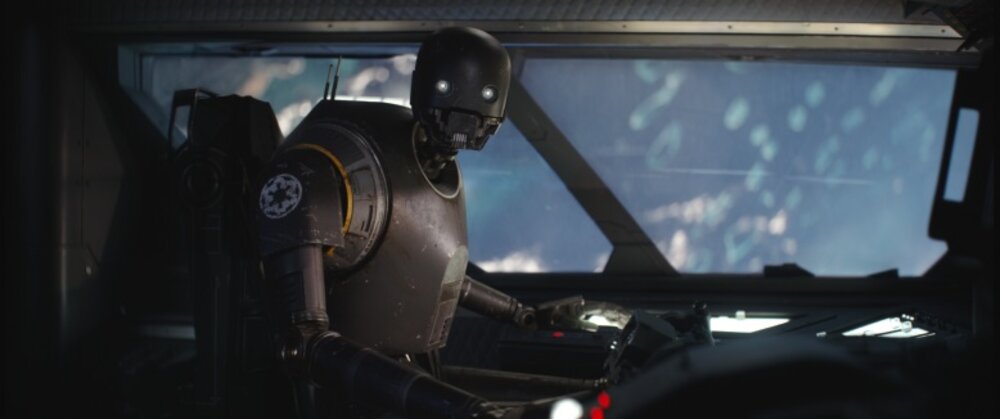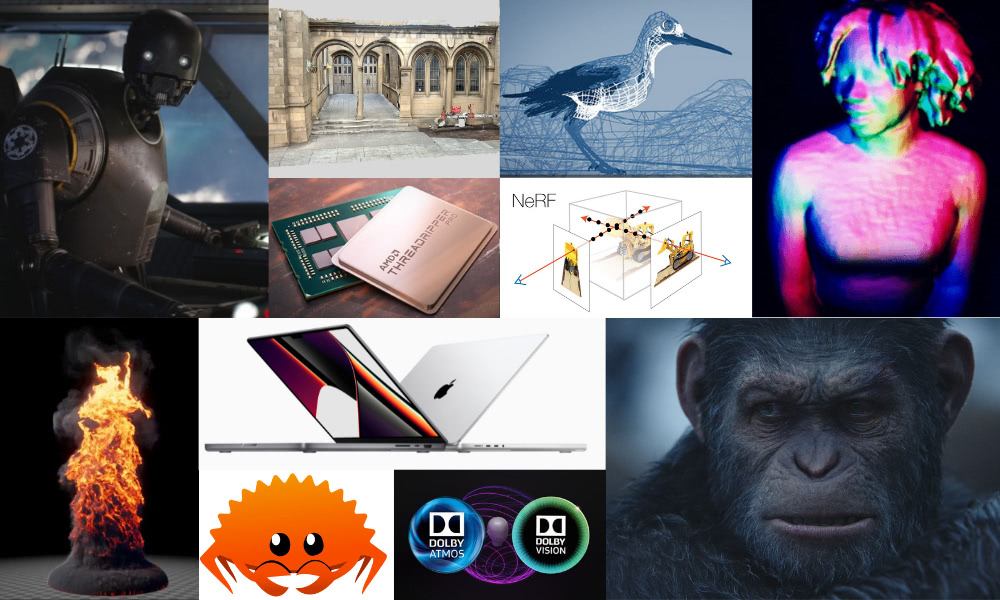Once again, we round out another crazy year where our lives are slowly inching back to normal. But while people are stuck in their homes, a lot of progress has been made on the tech front for our industry. Here is a sample subset:
- Academy Software Foundation (ASWF) formation of Rust Working Group. Simply put, Rust is a flexible open source programming language. The Rust Working Group is putting together bindings for C++ libraries so that facilities can easily tap into the open source formats under ASWF including MaterialX, OpenColorIO, OpenEXR, OSL, OpenTimelineIO and OpenFVB.

Apple M1 MacBook - Apple M1 series of laptops and, recently, the Pro and Max versions. The custom Apple M1 chip is fast and powerful compounded with an 8-core GPU and an SSD, which makes it one fast little computer. Apple has even made it (somewhat) affordable.
- UnrealEngine + TouchDesigner. Sure, we’ve been seeing Unreal changing things in film production, but working with Touch Designer expands things into interactive live events — even with people!
- AMD Ryzen Threadripper. AMD is pushing Intel hard to come out with their new chip (nothing like some healthy competition), but the 5000 Chagall is right around the corner.

EmberGen - EmberGen. This super-fast, GPU-accelerated fluid simulator for games and VFX is something to behold!
- NeRFs (Neural Radiance Fields). This is not something new for this year, but this method for determining and synthesizing complex scenes from numerous images or a model is maturing fast. It’s really heating up in machine learning and computer vision.

Project Starline - Project Starline. Zoom calls that feel like you are with the person through a combination of machine learning, spatial, computer vision and real-time compression.
- USD. This is a returning contender. A universal scene description (literally the acronym) for 3D. Developed by Pixar, it is quickly becoming ubiquitous in the VFX industry.
- USDZ. This archive for USD scenes can contain objects beyond the 3D data, such as textures, shading information, rigging and sound. The package makes it possible to view the objects in AR-capable iOS devices with the need for additional apps.

ILM uses MaterialX to add texture to blockbusters like Star Wars: Rogue One - MaterialX. It’s coming up on a decade, and MaterialX still makes headway in the library of open-source formats. Developed at ILM and Lucasfilm back in the day, MaterialX has been adopted and incorporated into Adobe (Substance), Autodesk products, SideFX and last year Epic did a MegaGrant for developing MaterialX into USD/Hydra.
- OpenTimelineIO. Developed to interchange editorial data between editing platforms but maintaining clips, timing, transitions, markers, metadata, etc., this is yet another arrow in the open-source quiver. OTIO is to EDL as Bruce Banner is to Smart Hulk!

LiDAR - Polycam (and LiDAR on iOS). Gathering onset data is a pain, and nothing more so than scanning sets. There will always be a place for real, accurate scans. There will always be a place for photogrammetry when you don’t have a scanner. But Polycam, in conjunction with the hardware on the recent iOS devices, blends those two. It’s not going to be as accurate, but when you need a quick scan, you’ve got this in your pocket. I’ve scanned all the things!
- Dolby Vision/Atmos. Movies should be experienced in a theater — with people. But in a pandemic, you may not have those luxuries. Dolby Vision HDR gives you amazing visuals at home with deep blacks and bright whites — and everything in between. It’s true what they say: Dolby Atmos surrounds you with sound.

Planet of the Apes was created using Weta’s proprietary WETAm toolset. - WETAm (and then Unity WETAm). Both the announcement of Weta releasing their internal tools for Maya and the subsequent $1.6B purchase of Weta by Unity is sending shockwaves through the industry. I’m not sure where this is headed, but it’s going to be interesting.
- Old Tech … is the new new tech. You can pick up refurbished workstations for pennies on the original dollar. Throw in a new GPU, add some RAM, get some SSDs and you have an absolutely capable machine. I picked up an HP Z820 with 128GB ram and two Nv qidia Quadros for $875. My original Z820 from 2013 with half the RAM would have originally been over $7,500 — and it still works great, but now I have a backup.
- mRNA Vaccines. Three decades in the making and it took a pandemic to push the funds to accelerate it into action. Giving your cells instructions to make the medicine you need is a game changer. Think what you like, but this tech is going to change medicine. And no, I don’t include Bill Gates nano-tracking devices in this list, because those don’t exist! (Happy New Year!)
Todd Sheridan Perry is an award-winning VFX supervisor and digital artist whose credits include Black Panther, Avengers: Age of Ultron and The Christmas Chronicles. You can reach him a todd@teaspoonvfx.com.




 Win a Funko X Lilo & Stitch Prize Pack!
Win a Funko X Lilo & Stitch Prize Pack!

